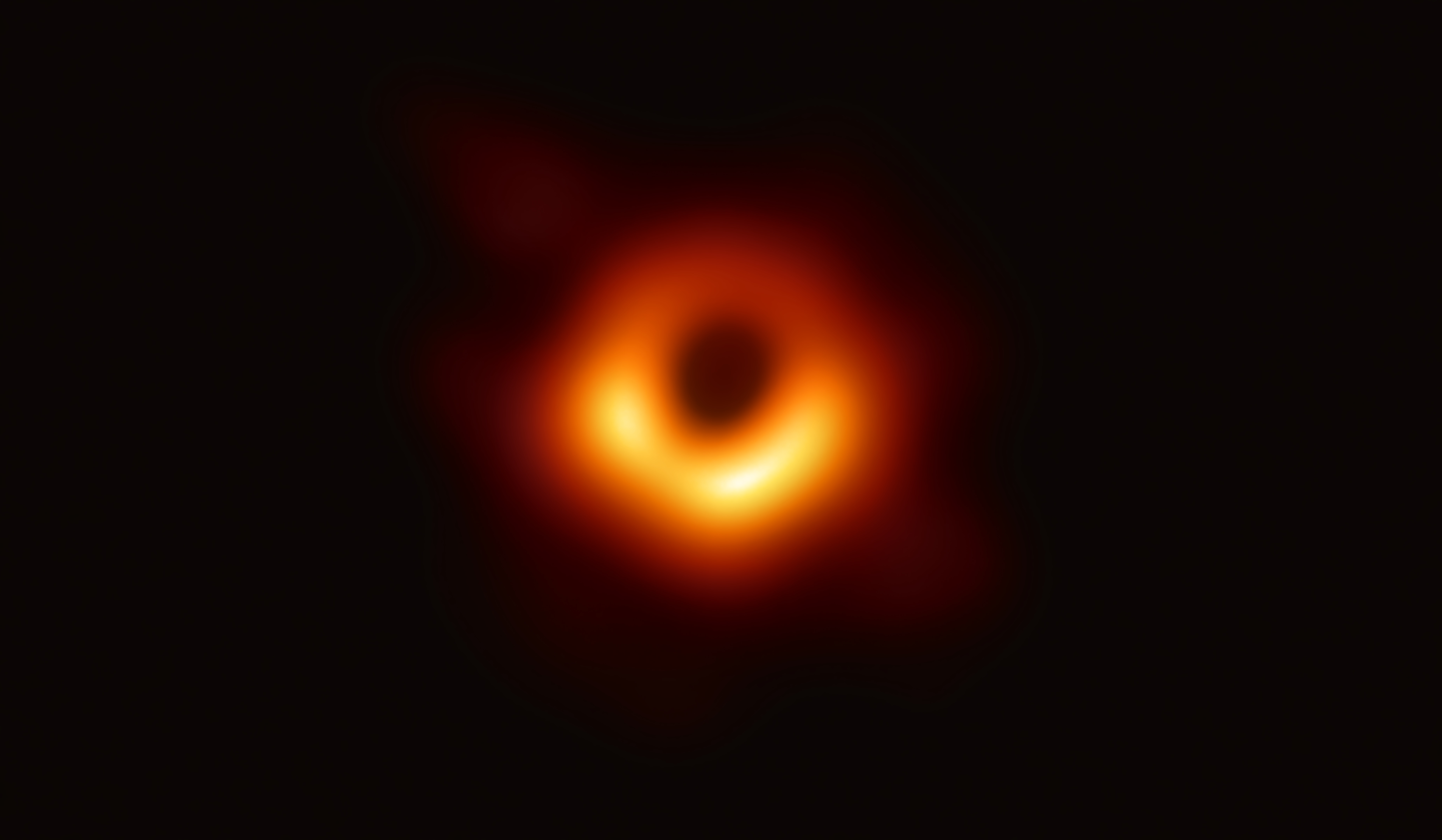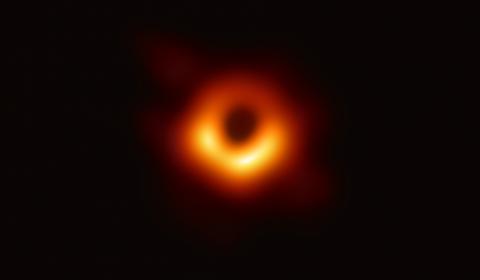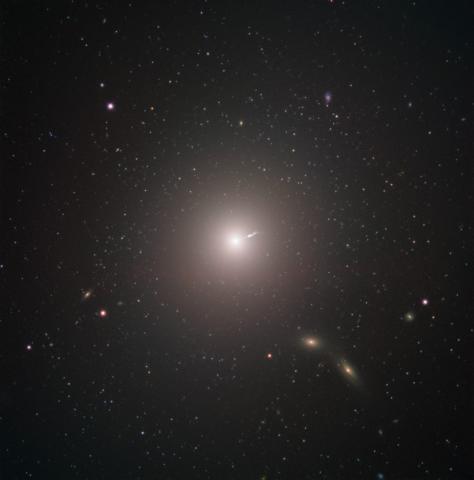
An international team of astronomers have produced the first ever direct image of a black hole, providing another stunning confirmation of Einstein’s famous theory of general relativity.
The image is the result of a seven-year project by the Event Horizon Telescope (EHT) international collaboration. To achieve the required precision, the team developed innovative new techniques to combine the observations taken at different locations around the globe. The effect of this was to simulate a telescope dish the size of the planet itself.
A black hole is the name given to a region of space so dense that not even light can escape its gravitational pull. As such, the black hole itself is unseeable, however the new image clearly shows its shadow cast on the ring of illuminated gas and dust being sucked in, called the accretion disc.
Prof. Mike Cruise, President of the Royal Astronomical Society, said, "Producing a detailed image of the region around a black hole is a remarkable technical feat, and the image is extraordinary. Black holes represent an extreme distortion of spacetime in an intense gravitational field, a visible demonstration of Einstein's general theory of relativity. Our congratulations go to all involved in the EHT collaboration for this amazing achievement."
Media contacts
Dr Robert Massey
Royal Astronomical Society
Tel: +44 (0)20 7292 3979
Mob: +44 (0)7802 877 699
press@ras.ac.uk
Dr Morgan Hollis
Royal Astronomical Society
Mob: +44 (0)7802 877 700
press@ras.ac.uk
Images and captions


Licence for both images: CC BY-SA 3.0 IGO
Notes for editors
The Royal Astronomical Society (RAS, www.ras.ac.uk), founded in 1820, encourages and promotes the study of astronomy, solar-system science, geophysics and closely related branches of science. The RAS organizes scientific meetings, publishes international research and review journals, recognizes outstanding achievements by the award of medals and prizes, maintains an extensive library, supports education through grants and outreach activities and represents UK astronomy nationally and internationally. Its more than 4,000 members (Fellows), a third based overseas, include scientific researchers in universities, observatories and laboratories as well as historians of astronomy and others.
The RAS accepts papers for its journals based on the principle of peer review, in which fellow experts on the editorial boards accept the paper as worth considering. The Society issues press releases based on a similar principle, but the organisations and scientists concerned have overall responsibility for their content.
Twitter: https://twitter.com/royalastrosoc
Facebook: https://facebook.com/royalastrosoc
Instagram: https://www.instagram.com/royalastrosoc/

